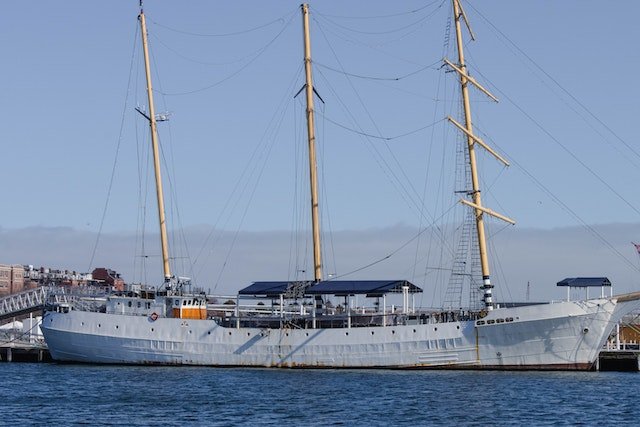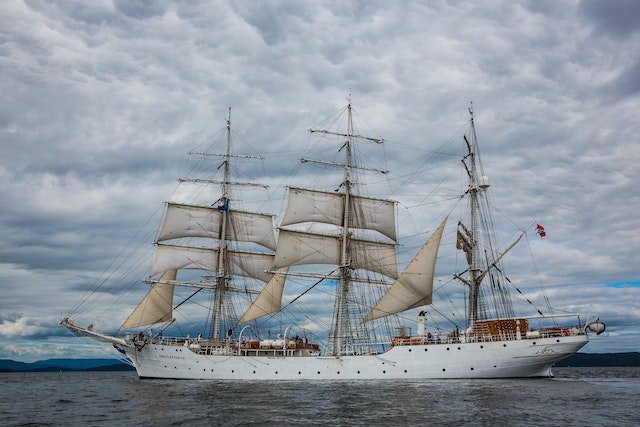Introduction.
The maritime industry is undergoing a profound transformation, driven by a growing commitment to environmental sustainability. Gone are the days when ships solely relied on fossil fuels; today, the industry is embracing renewable energy sources like solar power and wind energy. This shift towards cleaner energy not only benefits the environment but also presents innovative solutions for powering vessels and reducing carbon emissions. Here, let’s explore the adoption of solar and wind energy in the maritime sector, the challenges it faces and the promising trends shaping a more sustainable maritime future.
Harnessing Renewable Energy Sources.
In today’s world, where we care a lot about the environment, the shipping industry is changing. It used to use only fossil fuels to power ships, but now it’s using clean energy sources. Instead of just using dirty fuels ships are using the power of the sun and the wind. Let’s see about the two main types of clean energy for ships: solar power and wind energy.
Solar Power on the High Seas.
The sun, a very powerful star in the sky, is now being used to make energy on the ocean. This is helping the ocean become more eco-friendly. Here’s how solar power is making boats and ships more sustainable.
Solar Panels on Maritime Vessels.
Solar panels on ships are like special energy-capturing devices that soak up sunlight and turn it into electricity. This electricity helps power the ship and makes it move while also being kinder to the environment. These solar panels are tough and placed carefully on the ship to get as much sunlight as possible.
Having solar panels on ships is great because it means they don’t need as much fuel which is better for the planet and cheaper for the ship. Additionally, these panels provide a steady supply of extra power for things like lights, navigation and other important stuff on board.
Power Generation and Storage.
Solar energy collected during the day is only part of the solution. To make sure to always have power vessels use big batteries to store extra energy from the sun when it’s sunny. These batteries act like a backup so the ships can use the stored energy at night or on cloudy days when the sun isn’t shining. This way the marine vessels can keep things running without using fossil fuels.
Meanwhile, it can also use the extra energy from the sun to charge electric vehicles like ferries that carry people across water. This helps the environment because it reduces pollution.
Wind Energy: Sails and Turbines.
During the day, the sun provides a lot of energy but at night the wind steps into help ships be more eco-friendly. New sail and wind turbine technology is changing how ships travel on the ocean.
Innovative Sail Technologies.
Sails used to be for moving boats but now they’re super smart. They have sensors and fancy materials to catch wind energy. They don’t just push the boat; they also make electricity and store it in batteries. So, the boat doesn’t need to use regular engines as much.
Wind Turbines on Ships.
Picture a ship with tall masts covered in modern wind turbines. This might sound like science fiction but it’s happening now. These turbines are put in just the right spots to catch the strong sea winds and turn them into electricity.
Putting wind turbines on ships is a big step forward for eco-friendly boat tech. They work quietly and well in making clean power that helps the regular power on the ship. Sometimes they make extra power that can be sent back to the power grid which help in renewable energy grow even more.
But what challenges and complexities lie on the path to fully harnessing these renewable energy sources at sea?
Energy Storage Efficiency
Storing energy efficiently is really important when we use solar panels and wind turbines to make power. We need better batteries that can save the extra energy these sources make even when the sun isn’t shining or the wind isn’t blowing. For things like boats, it’s extra important to have batteries that can hold a lot of energy but don’t weigh too much or take up too much space.
Weather-Dependent Energy.
Solar and wind power rely on good weather. If it’s cloudy or stormy for a long time these energy sources may not work well. People who design and use ships need to think about this when they decide how to use energy on sea journeys.
Space Constraints.
Space on ships is very valuable, especially on cargo ships. It’s tricky to add green energy systems while keeping enough room for cargo. We need smart designs and small equipment to solve this problem.
Maintenance and Durability.
Renewable energy setups in the tough ocean conditions face problems like rust from salty water and always moving around. To keep these systems working well, it needs strong materials and regular maintenance plans.
Integration with Existing Systems
Adding renewable energy systems to existing ships can be tricky. Engineers have to make sure these new systems work well with the ship’s regular power, navigation and communication systems to keep the ship safe and working properly.
The maritime industry is determined to use clean energy, like solar and wind power, even though it’s tough. Governments and groups around the world are supporting this by making rules and giving rewards.
In the future, ships can use both the sun and the wind for power. And they’re getting better at storing energy and making new designs. This means ships will be more eco-friendly. Even though it’s not easy, we’re getting closer to a time when ships can sail silently and cleanly with the help of nature and smart ideas.

In this progressive march towards a more sustainable maritime future, these trends further underscore the maritime industry’s commitment to harnessing renewable energy sources at sea:
Research and Innovation: Maritime researchers and industry leaders are working hard to make renewable energy better and cheaper. They’re using new technology to do this.
Collaborative Initiatives: More and more often, countries, groups and businesses are teaming up to work together on renewable energy projects for ships and boats. They share what they know, use the best methods and agree on how to make renewable energy work well in the maritime industry.
Hybrid Propulsion Systems: Using both regular engines and renewable energy sources together in vehicles is becoming more popular. These hybrid systems can work in different situations and help cut down on pollution.
Electrification of Ports: Ports are important places for ships. Hence, they are working to use clean energy. Some ports are putting up solar panels, wind turbines and power sources on the shore to give ships clean energy when they stop there.
Regulatory Support: International groups such as International Maritime Organization (IMO), overseeing ships and boats are making rules to encourage the use of clean energy in the industry. These rules are making it easier for sustainable practices to be used.
Renewable Energy-Powered Ferries: Ferries that travel short distances are using cleaner energy sources more and more. They are using electricity and a mix of electricity and something called hydrogen fuel cells to power their engines. This is happening in places near the coast.
Environmental Certification: Groups like Green Marine evaluate and reward shipping companies for being eco-friendly. These certifications make companies show how they use clean energy and be more honest about it.
Conclusion.
The maritime industry’s shift towards harnessing renewable energy sources represents a significant stride towards a more sustainable future. Solar power and wind energy have emerged as viable alternatives with innovative technologies and collaborative efforts driving progress. Overcoming challenges related to energy storage, weather-dependency, space constraints, maintenance and system integration remains pivotal. Nevertheless, ongoing research, hybrid propulsion systems, electrification of ports, regulatory support, renewable energy-powered ferries and environmental certifications are promising trends that underline the industry’s commitment to eco-friendly practices. As we navigate these waters of change, the prospect of cleaner, more efficient and environmentally responsible maritime transportation draws nearer.

